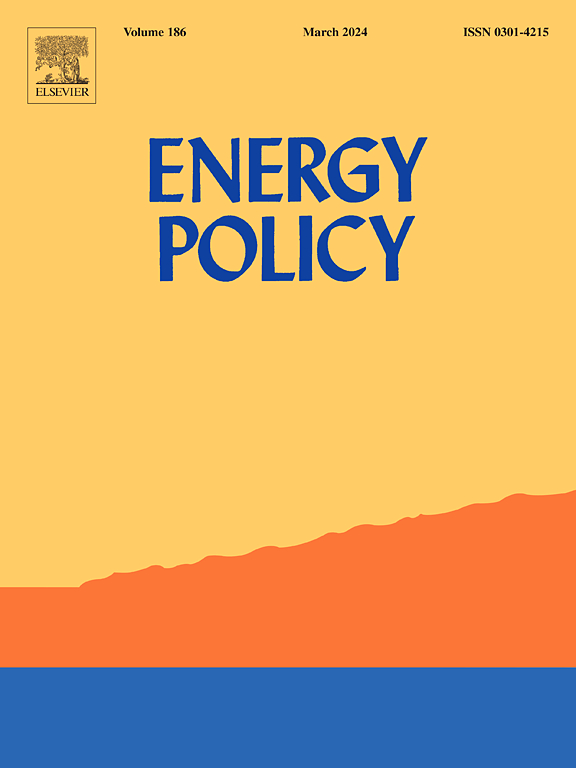Power system expansion and renewable integration for drought-resilient electrification in Zambia
IF 9.2
2区 经济学
Q1 ECONOMICS
引用次数: 0
Abstract
Zambia’s electricity sector relies heavily on hydropower, making it vulnerable to climate-induced hydrological variability, as seen in recent droughts causing severe load shedding and economic disruption. This study explores pathways to achieve universal electricity access by 2030 in Zambia, assessing the trade-offs between grid stability, climate targets, and equitable access. Using policy-driven scenarios, the analysis incorporates electricity demand growth, hydrological variability, and coal deployment to model system transitions. The results highlight that solar and wind energy are vital for diversifying Zambia’s energy mix and reducing reliance on hydropower. Even in the absence of increased access efforts, at least 2.6 GW of solar power will be required by 2030, while under higher electricity access or low hydropower availability, solar could reach 8.4 GW and wind could exceed 4 GW. Flexible technologies such as biomass, coal, and battery storage are essential to maintaining grid reliability during dry hydropower periods. However, coal poses long-term sustainability concerns. This research adds to the emerging body of knowledge by incorporating off-grid solutions and demonstrating that achieving universal access requires a balanced approach. Strategies combining grid extension with decentralized solutions like solar home systems and mini-grids offer the lowest electrification costs per capita at $111 and $120, respectively, while achieving universal electricity access by 2030. In contrast, grid-dominant strategies are costlier and less inclusive. The paper concludes with policy recommendations, emphasizing the need to modernize infrastructure, support decentralized renewables, and mobilize investment, providing actionable insights for a resilient and inclusive energy transition in Zambia.
赞比亚电力系统扩展和可再生能源整合,实现抗旱电气化
赞比亚的电力部门严重依赖水力发电,这使得它很容易受到气候引起的水文变化的影响,最近的干旱造成了严重的负荷减少和经济中断。本研究探讨了到2030年在赞比亚实现普遍电力接入 的途径,评估了电网稳定性、气候目标和公平接入之间的权衡。利用政策驱动的情景,分析将电力需求增长、水文变化和煤炭部署纳入系统过渡模型。研究结果强调,太阳能和风能对赞比亚能源结构多样化和减少对水电的依赖至关重要。即使在没有增加接入努力的情况下,到2030年至少需要2.6吉瓦的太阳能,而在更高的电力接入或低水电可用性下,太阳能可能达到8.4吉瓦,风能可能超过4吉瓦。灵活的技术,如生物质能、煤炭和电池存储,对于在干水力发电期间保持电网的可靠性至关重要。然而,煤炭带来了长期可持续性问题。这项研究通过纳入离网解决方案,增加了新兴的知识体系,并证明实现普遍获取需要一种平衡的方法。将电网扩展与分散式解决方案(如太阳能家庭系统和微型电网)相结合的战略,人均电气化成本最低,分别为111美元和120美元,同时到2030年实现普遍通电。相比之下,电网主导战略成本更高,包容性更弱。本文最后提出了政策建议,强调需要实现基础设施现代化,支持分散式可再生能源,动员投资,为赞比亚实现有弹性和包容性的能源转型提供了可行的见解。
本文章由计算机程序翻译,如有差异,请以英文原文为准。
求助全文
约1分钟内获得全文
求助全文
来源期刊

Energy Policy
管理科学-环境科学
CiteScore
17.30
自引率
5.60%
发文量
540
审稿时长
7.9 months
期刊介绍:
Energy policy is the manner in which a given entity (often governmental) has decided to address issues of energy development including energy conversion, distribution and use as well as reduction of greenhouse gas emissions in order to contribute to climate change mitigation. The attributes of energy policy may include legislation, international treaties, incentives to investment, guidelines for energy conservation, taxation and other public policy techniques.
Energy policy is closely related to climate change policy because totalled worldwide the energy sector emits more greenhouse gas than other sectors.
 求助内容:
求助内容: 应助结果提醒方式:
应助结果提醒方式:


